Very loud explosion at Stromboli volcano, Italy
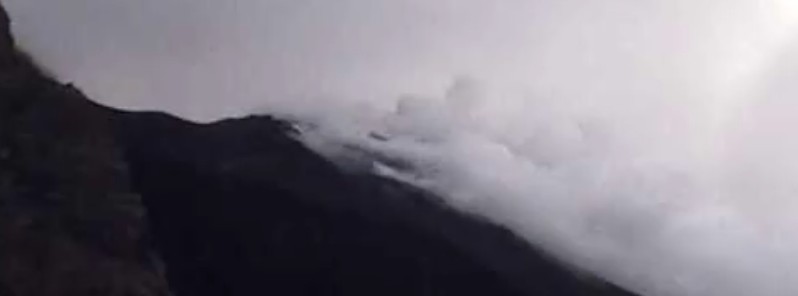
Intense activity continues at Italy's Stromboli volcano with a very loud and bright explosion around 20:00 UTC on January 11, 2018. Yesterday's event follows several powerful explosions recorded over the past 3 months.
Friends of Volcano Discovery, who are currently on the island, said a very large detonation occurred at the volcano around 21:00 local time yesterday.
"The night sky was as bright as day, even the window facing the sea towards the east was lit up," Thomas H. said. "My girlfriend believed to hear rumblings from falling rocks, while I suspected this to be rather the sound of strong rain."
"There was no trace of such eruption on the available webcam images, except they indeed show that rather strong eruptions continue to occur," Volcano Discovery reported.
A few days ago, Thomas said that activity at the volcano continues to be very intense, with explosions every few minutes, including often large enough to send bombs up to 300 m (980 feet).
The volcano had several powerful explosions over the past 3 months.
A sudden explosion took place at 14:04 UTC on October 23, 2017, when the volcano ejected bombs on a vast area around the crater. There were no people nearby at the time and there were no reports of damage or injuries.
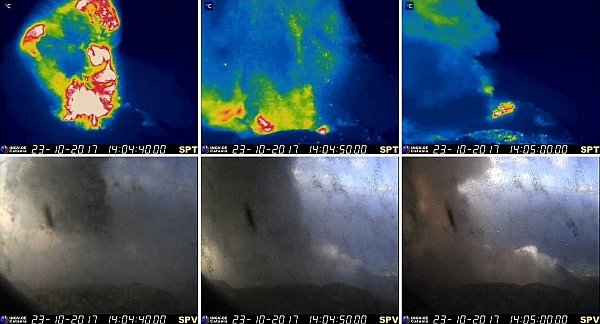
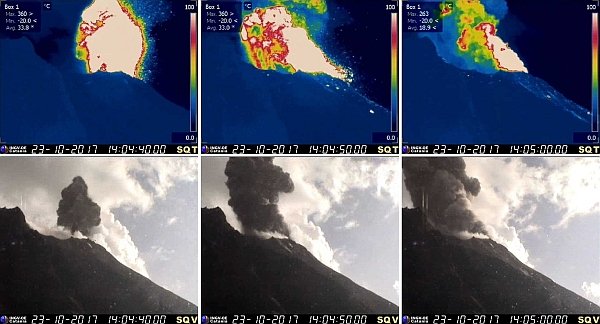
Image credit INGV
Another strong explosion occurred at 20:29 UTC on November 1, 2017, and lasted approximately 3 minutes. According to INGV Catania, the explosion was similar to that of October 23, 2017.
"Surveillance camera image analysis showed that the explosive sequence started with an intense event from the southcentral crater and was followed by several smaller explosions in the following minutes," the observatory said.
The explosion ejected abundant crude pyroclastic material on Sciara del Fuoco viewpoint and in the direction of Pizzo sopra la Fossa as well as dense ash plume which quickly dispersed.
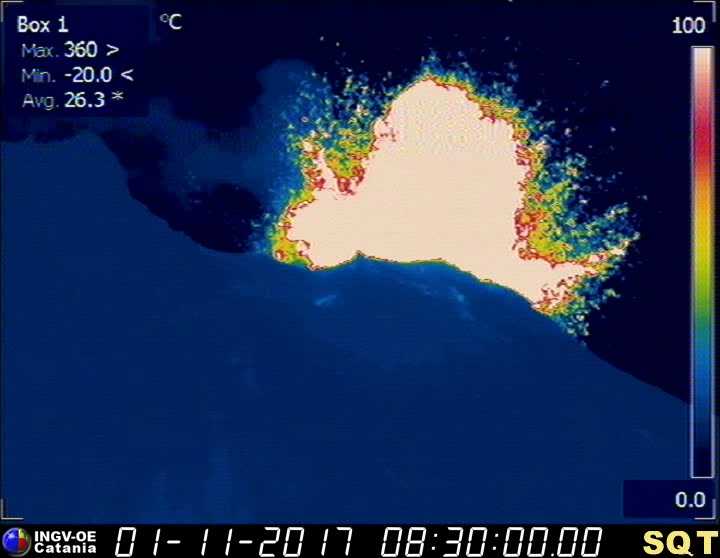
Credit: INGV
"This was a typical explosive sequence, well known in the literature, and is not necessarily linked to the rise of new magma," INGV said.
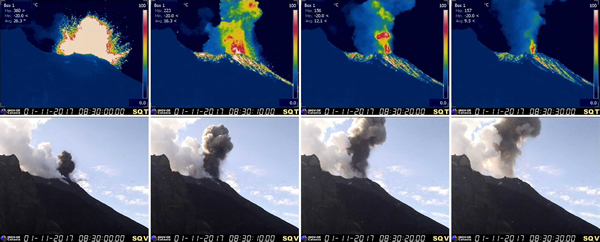
Credit: INGV
The last significant event took place on December 15, 2017, with at least two 'stronger than usual' explosions. The first took place at 01:30 UTC (December 15) and the second around 10:30 UTC. Soon after, lava began overflowing the northern edge of the N1 crater depression and pouring over the upper part of Sciara del Fuoco.
Local media reported a 'gigantic cloud of smoke' was visible from the other islands of the archipelago.
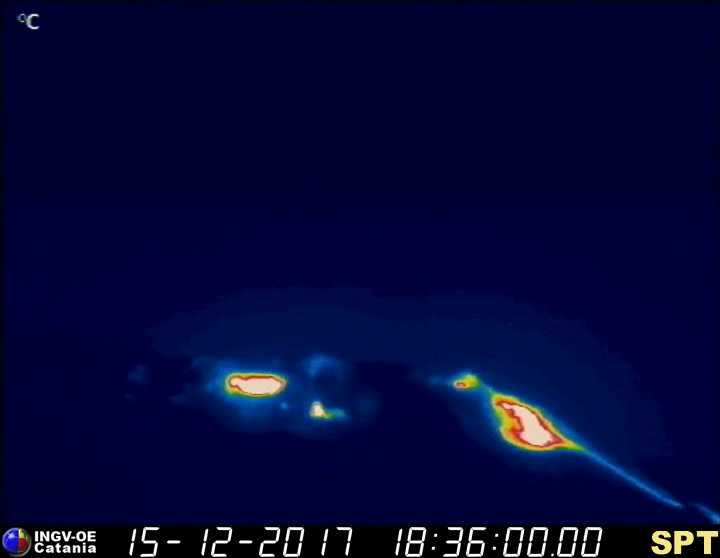
Credit: INGV-OE Catania
Mayor Marco Giorgianni said he is in constant contact with volcanologists and assured the population that the situation is under control.
Frequent detonation waves were reported throughout the day.
Geological summary
Spectacular incandescent nighttime explosions at this volcano have long attracted visitors to the "Lighthouse of the Mediterranean."
Stromboli, the NE-most of the Aeolian Islands, has lent its name to the frequent mild explosive activity that has characterized its eruptions throughout much of historical time. The small, 924-m-high (3 031 feet) island is the emergent summit of a volcano that grew in two main eruptive cycles, the last of which formed the western portion of the island.
The Neostromboli eruptive period from about 13 000 to 5 000 years ago was followed by formation of the modern Stromboli edifice. The active summit vents are located at the head of the Sciara del Fuoco, a prominent horseshoe-shaped scarp formed about 5 000 years ago as a result of the most recent of a series of slope failures that extend to below sea level.
The modern volcano has been constructed within this scarp, which funnels pyroclastic ejecta and lava flows to the NW. Essentially continuous mild strombolian explosions, sometimes accompanied by lava flows, have been recorded for more than a millennium. (GVP)
Featured image: Stromboli volcano at 12:48 UTC, January 12, 2018. Credit: INGV-OE Catania

Commenting rules and guidelines
We value the thoughts and opinions of our readers and welcome healthy discussions on our website. In order to maintain a respectful and positive community, we ask that all commenters follow these rules:
We reserve the right to remove any comments that violate these rules. By commenting on our website, you agree to abide by these guidelines. Thank you for helping to create a positive and welcoming environment for all.